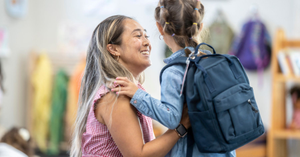Bringing your newborn home from the hospital is a momentous occasion, filled with joy and anticipation. One of the special tasks for new parents is choosing the perfect coming home outfit for their baby. This outfit will be captured in photographs and memories for years to come, so it’s essential to choose something that is not only adorable but also comfortable and practical. This article provides a detailed guide on picking the ideal baby coming home outfit, considering factors such as the season, fabric, size, and additional accessories.
Introduction to the Coming Home Outfit
The coming home outfit is a special set of clothes that your baby will wear when leaving the hospital and arriving home for the first time. This outfit is significant because it marks the beginning of your baby’s journey in the outside world and is often part of your first family photos. While aesthetics are important, the primary considerations should be comfort, practicality, and safety.
Factors to Consider
Season and Weather
The time of year your baby is born greatly influences the type of outfit they will need. It’s crucial to choose an outfit that will keep your baby comfortable in the current weather conditions.
- Spring and Summer: Lightweight, breathable fabrics are ideal for warmer months. Consider outfits with short sleeves or sleeveless designs to keep your baby cool.
- Fall and Winter: Layers are essential for colder weather. Look for warm fabrics, long sleeves, and accessories like hats and booties to keep your baby warm.
Fabric and Comfort
Newborns have sensitive skin, so choosing the right fabric is crucial to prevent irritation and ensure comfort.
- Natural Fabrics: Opt for natural, breathable fabrics like cotton or bamboo. These materials are gentle on the skin and help regulate body temperature.
- Avoid Harsh Materials: Stay away from fabrics that may cause discomfort, such as wool or synthetic blends that can be scratchy or cause overheating.
Size and Fit
Newborns come in various sizes, so selecting the right size can be challenging. Most newborns fit into newborn (NB) or 0-3 months sizes, but it’s essential to consider your baby’s weight and length.
- Preemie Sizes: For babies born prematurely or on the smaller side, preemie sizes may be necessary.
- Newborn Sizes: Standard newborn sizes usually fit babies up to 8-10 pounds.
- 0-3 Months: If you anticipate a larger baby, 0-3 month sizes might be more appropriate.
Ease of Dressing
Newborns can be delicate and wiggly, making dressing them a bit tricky. Choose outfits that are easy to put on and take off.
- Snap Closures: Look for outfits with snap closures along the front or side, making it easier to change your baby without pulling clothing over their head.
- Envelope Necklines: These allow the outfit to be easily pulled down over the shoulders and off the baby without disturbing them too much.
Safety Considerations
Safety should always be a top priority when selecting a coming home outfit.
- Avoid Loose Parts: Ensure there are no loose buttons, bows, or embellishments that could pose a choking hazard.
- Proper Fit: The outfit should fit well but not be too tight. Loose clothing can bunch up and cause discomfort or become a suffocation hazard.
- Fire Safety: Choose outfits that are labeled as flame-resistant or snug-fitting to reduce the risk of fire hazards.
Seasonal Outfit Ideas
Spring and Summer
For warmer months, consider the following outfit ideas:
- Rompers and Onesies: Lightweight and breathable, perfect for keeping your baby cool.
- Cotton Dresses: For baby girls, cotton dresses with bloomers are both cute and comfortable.
- Sun Hats: Protect your baby’s delicate skin from the sun with a lightweight hat.
Fall and Winter
For colder weather, layering is key:
- Long-Sleeve Bodysuits: Provide warmth and can be layered under other clothing.
- Footed Pajamas: Keep your baby cozy from head to toe.
- Hats and Booties: Essential accessories for keeping your baby warm.
- Blanket: A soft, warm blanket can be used to wrap your baby securely in their car seat.
Additional Accessories
Accessories can enhance your baby’s comfort and the overall look of their coming home outfit:
- Mittens: Prevent your baby from scratching their face with soft mittens.
- Socks and Booties: Keep little feet warm and protected.
- Bibs: Protect the outfit from drool and spit-up.
- Headbands: For baby girls, a soft headband can add a cute touch.
Practical Tips for Choosing the Outfit
- Bring Multiple Options: Babies can be unpredictable, and having a few outfit options ensures you’re prepared for any situation.
- Consider Diaper Changes: Choose outfits that make diaper changes quick and easy.
- Pack a Backup: Accidents happen, so packing a backup outfit in your hospital bag is always a good idea.
- Comfort Over Style: While it’s tempting to choose the cutest outfit, prioritize comfort and practicality.
- Wash Before Use: Always wash new clothes before dressing your baby to remove any chemicals or irritants.
Conclusion
Choosing the ideal coming home outfit for your baby is a special task that blends practicality with sentiment. By considering factors such as the season, fabric, size, and ease of dressing, you can ensure your baby is comfortable and safe as they leave the hospital and begin their journey at home. Remember, the most important aspects are your baby’s comfort and safety, so prioritize these over style. With the right outfit, your baby will not only look adorable but also feel snug and secure, making the moment even more memorable








Be the first one to comment on this story.